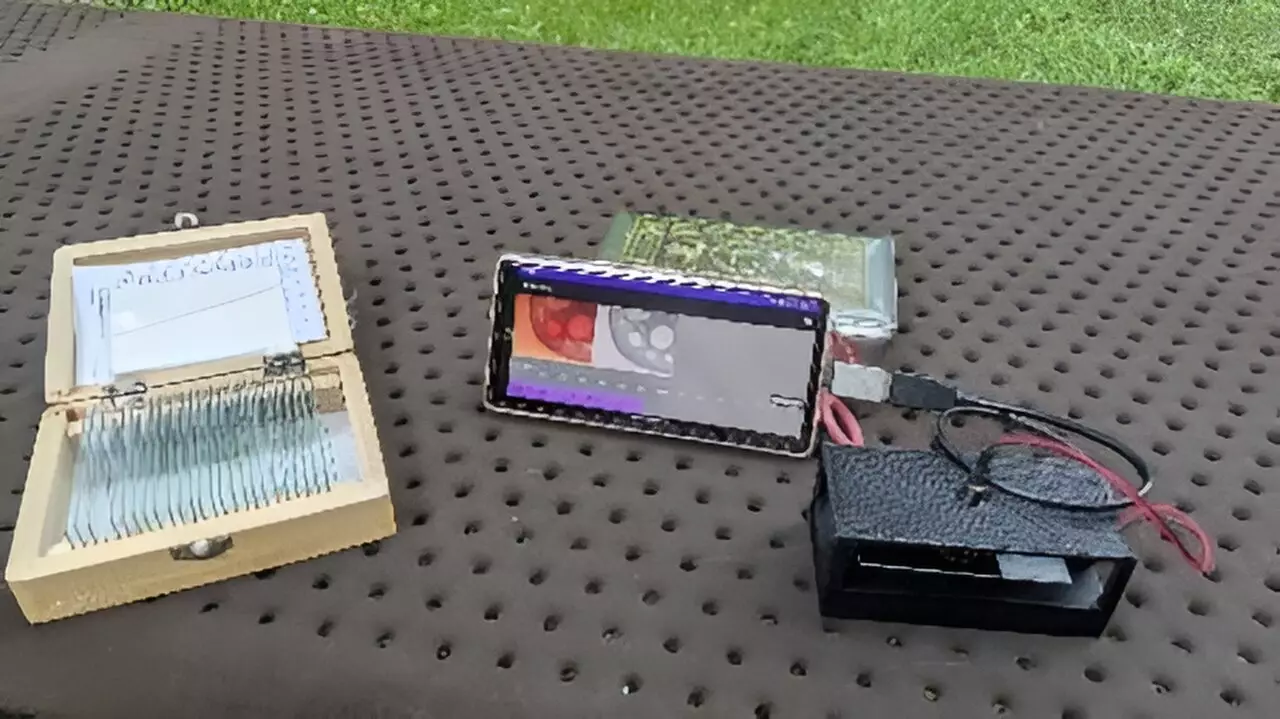In the rapidly evolving field of microscopy, a groundbreaking development has piqued the interest of researchers and medical professionals alike—a smartphone-based digital holographic microscope. This innovative device marries modern technology with the traditional concepts of microscopy, offering a portable and cost-effective alternative to its complex predecessors. The implications of this advancement are immense, particularly in education and healthcare, especially in areas where resources are scarce.
Digital holographic microscopy operates on a principle of measuring the interference patterns created by light from a sample and a reference beam. The uniqueness of this method lies in its ability to capture not only surface features but also internal structures of microscopic samples. The reconstructed hologram reveals intricate 3D information that can be vital for various scientific applications. Unlike conventional systems that often rely on bulky setups and specialized computing systems, the new smartphone-based design streamlines this process, allowing for accessibility outside the confines of traditional laboratories.
Led by a team from the Tokyo University of Agriculture and Technology, research head Yuki Nagahama has emphasized the simplicity and cost-effectiveness of this new microscope configuration. By utilizing a 3D-printed optical system and employing smartphone technology for computation, the team has transcended the limitations imposed by traditional digital holographic setups. Where previous models would require extensive optical systems and separate computational devices, this new approach boasts both portability and affordability, making it a viable option for various users.
An impressive feature of this smartphone-based holographic microscope is its near real-time capability for capturing and displaying holograms. Users can enhance their observational experience by utilizing intuitive touch gestures, such as pinching to zoom in on images. This interactive component significantly augments the learning potential for students, who can now engage directly with living specimens in a classroom or at home.
Despite its many advantages, one major challenge in smartphone-based holography is the limited processing power and memory of most mobile devices. However, Nagahama and his team have ingeniously employed a computational technique known as band-limited double-step Fresnel diffraction, which minimizes data points to facilitate faster holographic reconstruction. The result is a sleek device capable of generating images at an impressive frame rate of 1.92 frames per second, significantly improving the user’s observational experience.
The implications of this new technology are vast and varied. In medical settings, it could revolutionize point-of-care diagnostics, particularly in low-resource environments. For instance, it may aid in diagnosing diseases such as sickle cell anemia in developing nations, where conventional diagnostic tools are often too costly or complicated to use. Furthermore, the educational applications are equally compelling; students can engage in real-time observation of microorganisms, thereby enhancing their understanding of biological sciences in a hands-on manner.
In addition, the system’s relatively low cost and portable design mean it is well suited for research outside the conventional laboratory, making it a valuable tool for field studies. This adaptability opens new avenues of exploration, enabling scientists to gather data in diverse environments and conditions.
As the research team looks toward the future, they aim to enhance the quality of images generated by this digital holographic microscope through the utilization of advanced techniques such as deep learning. The inherent challenges of unwanted artifacts often generated during holographic reconstruction can potentially be mitigated through these sophisticated computational techniques, leading to clearer images and more accurate data analysis.
This move to incorporate artificial intelligence into microscopy reflects broader trends in many scientific fields, indicating a significant potential shift in how researchers and medical practitioners approach diagnostics and research methodologies.
The smartphone-based digital holographic microscope represents not just a technological feat but a paradigm shift in the accessibility of advanced microscopy. It has the potential to democratize scientific research and medical diagnostics in ways that were previously unimaginable. As technology continues to evolve, the integration of smartphones into scientific instrumentation could herald a new era of exploration and understanding in both educational and healthcare fields. With continued advancements, this innovation could provide critical insights into microscopic phenomena that will help shape our approach to science and medicine in the years to come.



Leave a Reply